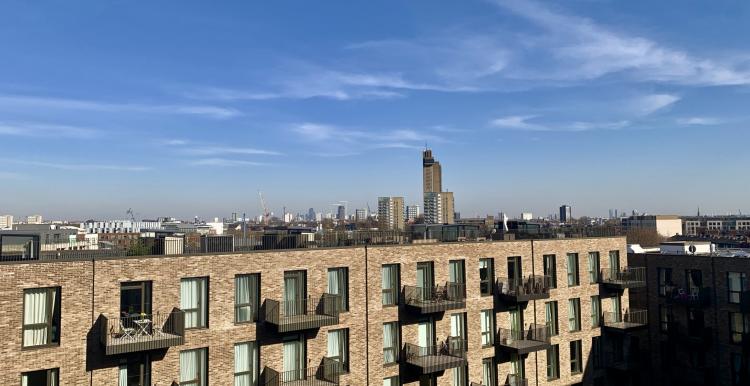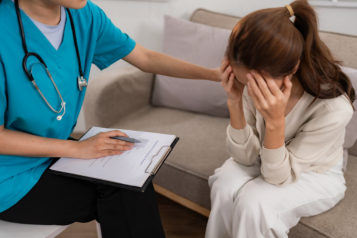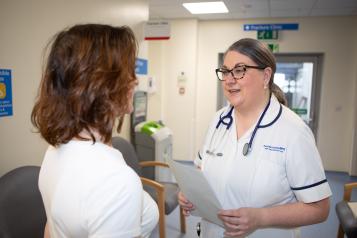How we adapted to the pandemic: reflections from two members of our team

With our office closed, and some of our colleagues working virtually from as far away as Greece and Bulgaria, we had to adapt quickly. In this piece, two members of our team reflect on the last year and what they have learnt.
Odeta Pakalynte, Primary Care Engagement Officer
“When the pandemic began, everything moved online. It was important that we learnt new ways of communicating, both with each other as a team and with the community.
“Our immediate focus was on the people we work with. What is happening for them? What are they worried about? What challenges are they facing accessing health and social care services? Lots of our other work was temporarily paused: our focus was on responding to COVID-19 and learning about how the pandemic was impacting health and social care provision.
“Our priority was to continue to speak to people and gather patient feedback. One of the first things I did, with my colleague Jill, was to organise an online Patient Participation Group (PPG) forum session on COVID-19. We wanted to know how local patients wanted to work with GP practices during this period.
“This first forum was incredibly positive. I saw that PPGs and their members just wanted to support GP practices. The immediate priority for everyone was making sure GP practices could navigate the coming months.
“Above all, we wanted to make sure that everyone had the opportunity to have their voice heard, that no one was excluded.”
“The success of the forum encouraged us that we can carry out engagement work virtually. This was an approach we promoted with other organisations, as we knew how important it was that all of us in health and social care continued to speak to patients and put their needs first.
“We quickly realised that there was not enough information for those who did not have online access or who were less confident with technology. We were also missing some people at virtual meetings. It was unfair that some people who had been very involved in working to improve health services, couldn’t work with us in our new virtual world. We opened other lines of communication: our phone was very active, and we sent out surveys, postcards, and letters to people in our communities so they could still engage with us. Above all, we wanted to make sure that everyone had the opportunity to have their voice heard, that no one was excluded.
“We were creative and brave… Over the last year we have heard from many people we haven’t heard from before.”
“As a team, I felt a real sense of community. We all wanted to work together, and we all had one aim at the time. The opportunity to work differently as a team was exciting: I enjoyed the challenge of figuring out different ways to carry out our work. It was difficult at times, especially since we were all at home and not in the office.
“We were creative and brave as we adapted to COVID-19. We explored many different methods of communicating. I think we were successful: alongside keeping in touch with the people we were talking to before the pandemic, through our new initiatives over the last year we have also heard from many people we haven’t heard from before.
Shukri Xalane – Research and Project Officer
“Although I joined Healthwatch CWL last August, midway through the pandemic, I spent time volunteering with the organisation in 2019. That means I got to see the organisation pre-pandemic, and after five months of adjustment.
“When I volunteered before the pandemic, I carried out website audits of other organisations working in health and social care, helped update social media, and worked on wider communications. Like most of the team, I was in the office and not at home like we all are now.
“It felt different when I joined the team full time, partly because as a volunteer you don’t have a set role, but also because we were all working from our own homes. In some ways, working from home made settling in easier. It really helped me to be able to shadow other staff members, to see what they do and how Healthwatch works. Going along to meetings and seeing my colleagues in action was easier online because I didn’t need to travel and could fit more into one day. It made it easier to understand what other people do. For example, it was useful to be able to shadow my colleague Sumita and see her work with the National Institute for Health Research – this has really helped me in my work now!
“It was busy and intense, but it felt like we were having an important impact.”
“It was busy and intense, but it felt like we were having an important impact.”
“There was also more collaboration with other organisations at this point than there had been pre-pandemic, too. Working virtually made coordinating meetings easier: weekly meetings with people from other local organisations began that weren’t happening before. To make sure we were all still in touch, we started having twice-weekly team meetings, too. It was busy and intense, but it felt like we were having an important impact.
“Overall, I felt there was a real appetite to change things, as the pandemic helped to further expose what parts of our health and social care system aren’t working for patients like they should.”


